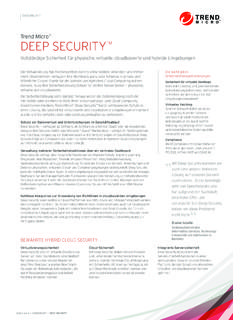Transcription of Network Intrusion Detection Implementation - …
1 Network Intrusion Detection Implementation Table of Contents Intrusion Detection Systems .. 2 IDS Characteristics .. 3 Passive and Active Detection .. 5 Detection Methods .. 6 Detection and Inspection .. 8 Network -Based IDS (NIDS) .. 10 NIDS Characteristics .. 12 NIDS Advantages .. 13 NIDS Disadvantages .. 16 NIDS Typical Deployment Environments .. 17 Intrusion Detection /Prevention System .. 18 IDS: Promiscuous-Mode .. 19 IPS: Inline-Mode .. 21 IDS: Promiscuous-Mode .. 22 IPS: Inline-Mode .. 23 Inside or Outside Sensor? .. 24 Both Network -Based IDS and IPS Deployment .. 26 Notices .. 27 Page 1 of 27 Intrusion Detection Systems 87 Intrusion Detection SystemsMonitoring Network traffic and/or host activity looking for Malicious traffic, such as attempts to circumvent identification & authorization or other access controls Reconnaissance traffic, such as port scans Unusual traffic: type, level, source, logging, reporting, and acting upon observed activity in a prescribed manner **087 Firewalls; the rules that we deal with for them on most things are relatively simple.
2 Intrusion Detection systems are looking for a particular type of activity that has been studied in the past and has been clearly labeled as malicious. That particular type of activity may require a series of setup packets-- you know, like where we'd have to do the three-way handshake first; and then it-- of a certain way-- and then it would pass it up through the stack, where we'd look for well recombining all of that stuff together and then Page 2 of 27passing it up the stack; and we do that inspection inside the Intrusion Detection System. The primary focus of Intrusion Detection Systems is not to stop packets; but it is to log and alert.
3 That's its main job. So really it's an observer of the activity. That's different from an Intrusion Prevention System. IDS Characteristics 88 IDS CharacteristicsMay be signature or anomaly basedThe two main parts of an IDS are the sensor (or agent) and consoleSignatureUses known pattern matching to signify attackAnomalyUses statistical variance or(sometimes) artificial intelligence (AI)engine to evaluate traffic, normal usage behaviors **088 Okay so what are the characteristics of an Intrusion Detection System? Well they can be signature based or anomaly based. Page 3 of 27 This is relatively simple in its nature.
4 There is a pattern of activity that has always bad. We've programed in the Intrusion Detection System rule that says: This is always bad, do not allow it through. That's one way. The more sophisticated way is what's called anomaly-based. You know, I've been looking at this Network for awhile; and this is the profile of this Network and this is how it communicates. You want to do what? That's anomalous to what the normal traffic patterns are back here; and so I'm going to reject that. Now that could cause a problem. And we'll get to that in a bit. Now there are two parts to an Intrusion Detection system: the center agent: the place where it's listening; and the actual console where a lot of the decisions are being made by the manager of this Network .
5 Page 4 of 27 Passive and Active Detection 89 Passive and Active DetectionPassivedevices may log, monitor, and/or alert of intrusive activities, but do not take action to stop or the block will take action based on the detected intrusive activity. Actions may include terminating processes, redirecting traffic, adding firewall rules to close ports, etc. **089 There's also two different types. There's Passive and Active Detection . When we talk about Passive Detection , all we're doing is is logging all this activity; and we don't take any actions, there's no stopping whatsoever. And then there's Active. Here's the thing with an Intrusion Detection System.
6 As this traffic- that traffic passed through, if it's an Active Intrusion Detection System, what it will do is it will send a reset. Page 5 of 27If the evil was in the first packet and it gets through, and there's no reset to do-- and/or there's not reset to do- - then at that moment in time, well there's no reset to do; I can't really do anything. And if the evil gets through on the first packet, I really can't take any action. So an Active Intrusion Detection System will actually take an action after the conditions are true; and not before. Detection Methods 90 Detection MethodsSignaturedetectionrelies on known attacks Will not be able to detect the unknown Example, detecting an exploit for a known vulnerabilityAnomalydetectionrelies on finding differences Must first understand what is normal Example, detecting an exploit for an unreleased vulnerability Potential for false positives **090 Now most of the time when we look at these Detection mechanisms, and we talk about Page 6 of 27signature and anomaly-- remember that its signature is good; but it's not going to attack the- it's not going to be able to detect the unknown.
7 It only looks for known vulnerabilities. So we have to have it. It won't do any good about zero-day attacks. However the anomaly Detection says: We're going to find the differences in the normal traffic pattern for these people back here; and we're going to say this is anomalous to that. And so a zero-day attack could be detected. But here's the problem. Anything that is anomalous is going to be rejected; and that creates well business changes. So therefore that creates a potential for false positives. Page 7 of 27 Detection and Inspection 91 Detection and InspectionHeuristic Scanning Differ based on technology Designed to detect the unknown , but not very successful Potential for false positives result in less sensitivity, thus less successBayesian Spam Filtering Statistical technique of spam filtering Correlates words with spam and non-spam e-mails then calculates probability that email is or is not spamPacket Inspection Different IDS/IPSs and firewalls examine packets to different levelsBehavior Inspection Looks for variations in behavior.
8 Such as levels of traffic **091 When we look at the Detection and inspection-- how is this done; what do the brains of this thing actually look like? And so we have a bunch of different Detection and inspection algorithms, if you will. In Heuristic Scanning we look for-- they differ based on technology. Heuristic scanning is not as good as it should be at this moment in time. It is looking for something that it's never seen before. It's kind-- anomalous; but it's statistical. Now one of the other things that you could talk about is Bayesian Spam Filtering-- which is close to heuristics- Page 8 of 27- to go ahead and say: This is-- I've never seen this before but this looks like spam; the tendencies, the statistics of this, that it doesn't actually fit with what I normally see as far as mail traffic is concerned.
9 So I'm going to reject it. And Bayesian filters actually learn over time. Packet inspection for IPS and IDS are well they're just like firewall examinations; but they go to a different level. They're looking for- instead of port or protocol- instead of port or IP address, now it's looking for if you scan inside the packet and you go deep inside of there and we see these two hexadecimal representations, along with these two hexadecimal representations, within this particular area; boy that's really deep down inside of what's going on. So the Intrusion Detection Systems that are doing that packet inspection are deep down inside; and they have to be really quick and efficient.
10 And then there's Behavioral; which is a generic way to say that this is a variation in the behavior, such as a traffic level. If we've got a mail server in the inside and it's used to a flow of 100,000 messages per day, and all of a sudden we start seeing more than 100,000-- you know, we get up about 150,000 messages a day or a million messages a day, some threshold in there-- that hey we're not going to allow that to go through. Page 9 of 27 Network -Based IDS (NIDS) 92 Network -Based IDS (NIDS)Connected to Network segments to monitor, analyze, and respond to Network trafficSingle sensor can monitor many hosts, requires management system for centralized monitoringNIDS sensors are available in two formats Appliance specialized hardware sensor and its dedicated software; use specialized NIC s, processors, and hard disks to efficiently capture traffic and perform analysis.

















